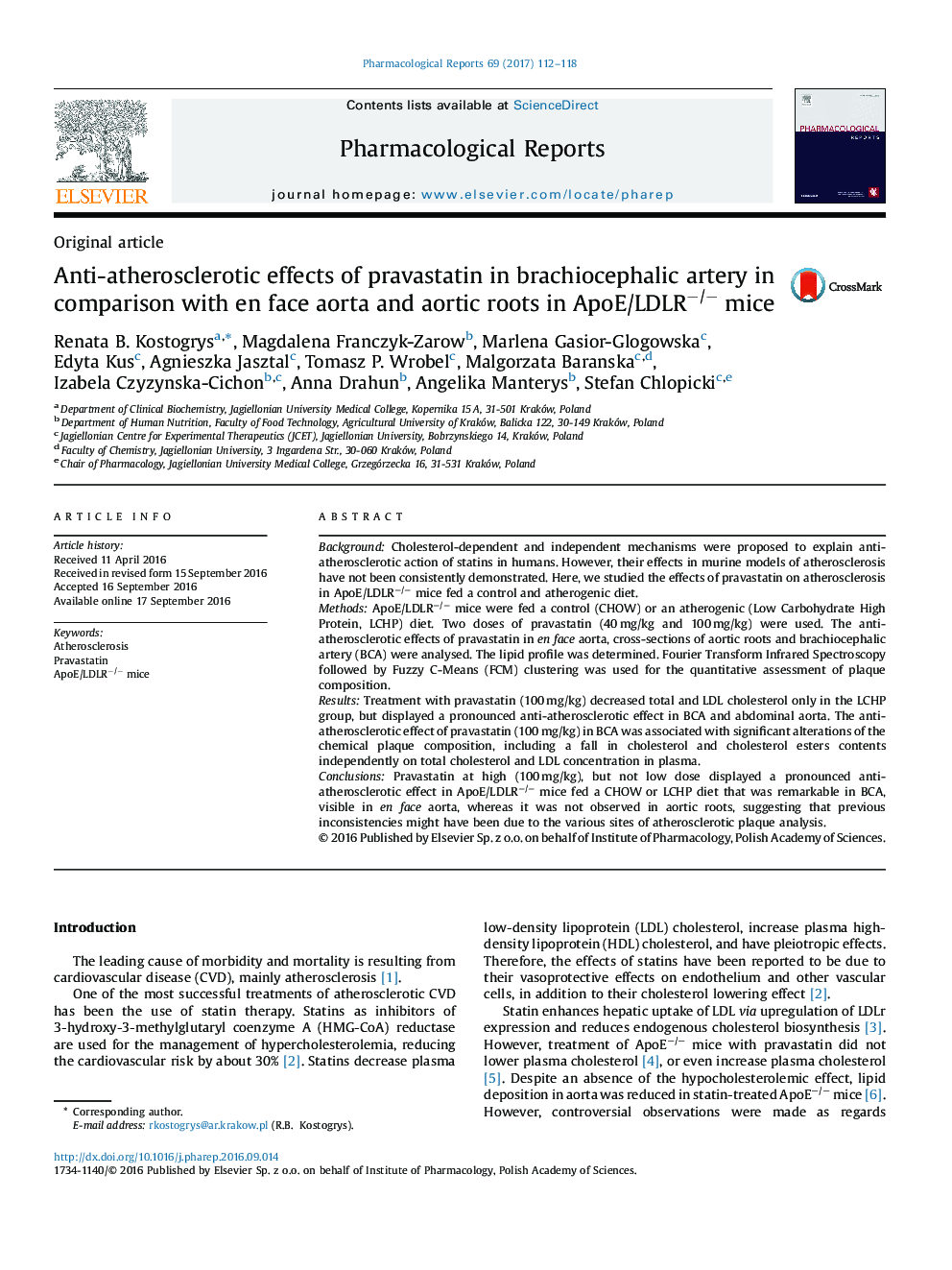| Article ID | Journal | Published Year | Pages | File Type |
|---|---|---|---|---|
| 5515118 | Pharmacological Reports | 2017 | 7 Pages |
BackgroundCholesterol-dependent and independent mechanisms were proposed to explain anti-atherosclerotic action of statins in humans. However, their effects in murine models of atherosclerosis have not been consistently demonstrated. Here, we studied the effects of pravastatin on atherosclerosis in ApoE/LDLRâ/â mice fed a control and atherogenic diet.MethodsApoE/LDLRâ/â mice were fed a control (CHOW) or an atherogenic (Low Carbohydrate High Protein, LCHP) diet. Two doses of pravastatin (40Â mg/kg and 100Â mg/kg) were used. The anti-atherosclerotic effects of pravastatin in en face aorta, cross-sections of aortic roots and brachiocephalic artery (BCA) were analysed. The lipid profile was determined. Fourier Transform Infrared Spectroscopy followed by Fuzzy C-Means (FCM) clustering was used for the quantitative assessment of plaque composition.ResultsTreatment with pravastatin (100Â mg/kg) decreased total and LDL cholesterol only in the LCHP group, but displayed a pronounced anti-atherosclerotic effect in BCA and abdominal aorta. The anti-atherosclerotic effect of pravastatin (100Â mg/kg) in BCA was associated with significant alterations of the chemical plaque composition, including a fall in cholesterol and cholesterol esters contents independently on total cholesterol and LDL concentration in plasma.ConclusionsPravastatin at high (100Â mg/kg), but not low dose displayed a pronounced anti-atherosclerotic effect in ApoE/LDLRâ/â mice fed a CHOW or LCHP diet that was remarkable in BCA, visible in en face aorta, whereas it was not observed in aortic roots, suggesting that previous inconsistencies might have been due to the various sites of atherosclerotic plaque analysis.
